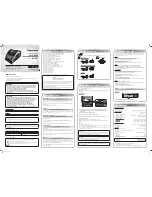
2.4 MPU CONTROL & INTERFACE BOARD
The Microprocessor (MPU) control & interface board is the heart of the product and at the centre is a
128k flash microprocessor that controls all the interface circuits to the radio modules and external
input/outputs. As well as the control functions, the processor provides DSP functionality that enables
full duplex modem operation between 150 – 9600bps with the option of FEC at 9600bps.
The board contains all necessary electronic potentiometers for full remote alignment and control, these
settings and other parameters are stored within the MPU‘s non-volatile EEPROM.
2.5 PROCESSOR FIRMWARE/SOFTWARE
The processor has 128k of flash memory from which the code is executed and internal EEPROM for
storing programmed parameters. As only about 50% of the memory space is used at the moment, there
is plenty of space for future upgrades and custom applications.
2.6 CUSTOM SOFTWARE
Custom software or protocols for specific client applications, can be written and included
as PC programmable options in relatively short time scales and normally at nominal costs. Further
details can be obtained from the sales office.
2.7 PROGRAMMING & CONFIGURATION
Apart from internal factory set-up links, all the parameters of the URT500 are PC programmable via the
serial port or over the radio link via a special secure mode.
Full details of all the programmable parameters are covered in the separate programming manual.
For additional memory space (should it be required) a piggy back memory board with a further 512k is
available to download new code to the processor.
2.8 SOFT MODEM:
The URT500 has a “soft modem” which offers unparalleled performance and flexibility over a wide
range of speeds and formats and enables future formats to be downloaded from a PC or over the air.
Within a 12.5kHz channel, the unit can be programmed for 150-2400bps FSK/FFSK with Bell202 &
V23 supported, 4800bps GMSK & 9600bps 4 Level FSK.
2.9 MODES OF OPERATION & PROTOCOL HANDLING
The basic modes of operation of the radio modem are as follows:
2.9.1
DUMB MODEM
The radio has no knowledge of the data it is transmitting, data is simply transmitted and received under
hardware control with the option of RTS control or initiation of transmit after receipt of serial data, with
CTS providing an optional flow control.
This configuration is useful when expanding older systems where the radios must be compatible with
others of a different manufacture.
2.9.2
PROTOCOL SPECIFIC MODEM
The radio recognises a complete frame and only transmits and receives data conforming to that format.
No addressing of radios or routing of data is performed. Protocols such as MODBUS & DNP3 can be
supported in this way.
2.9.3
ROUTING MODEM
The radios recognise a protocol specific frame and the address to which the frame is to be sent.
Routing information must be stored in each radio for each destination address that requires the use of
repeaters. Any radio in the system can operate as a repeater. The radio does not perform any
acknowledgement or retries. Any protocol using a fixed address field such as MODBUS can be
supported.
URT500 Manual
Page 6 of 42
Rev. C – 6 August 2008





































